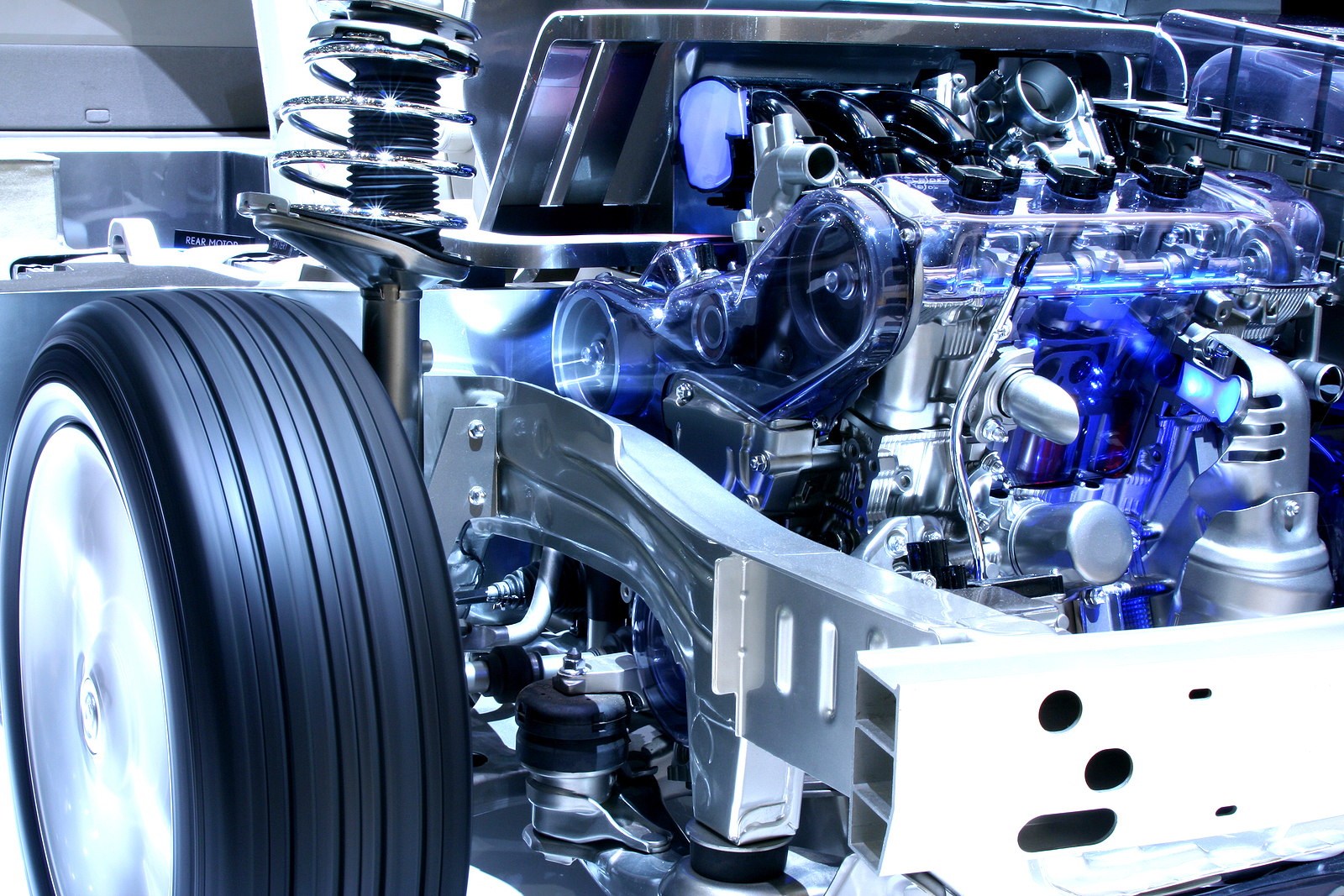The great hybrid car debate
While the debate around the decarbonisation of transport continues, a revolution is occurring on British roads.
The age of the hybrid is well and truly upon us, with glossy ads aplenty encouraging drivers to ditch traditional petrol and diesel engines and switch to a newer, greener and sexier form of transport.
And that revolution is gathering pace. Figures released by the Society of Motor Manufacturers and Traders (SMMT)
earlier this month show more than 40,000 were registered in October — out of a total of 140,495 of all the new vehicles on the road last month.
For many drivers, hybrids seem to be the logical next step to a low-carbon future, especially given the government’s
recent announcement that the sale of new petrol and diesel cars is to end in 2030.
Although there is a slight caveat in the government’s plans, it says new cars and vans can be sold between 2030
and 2035 if they have the capability to drive a significant distance with zero emissions – for example, plug-in hybrids or full hybrids — but this will be defined through a forthcoming consultation. Whatever happens, hybrid cars will remain in showrooms for some time to come.
But there have been some reports recently querying the environmental credentials of hybrids, and in particular plugin hybrids, with some campaigners arguing they are ‘wolves in sheep’s clothing’.
In September, a study by the German Fraunhofer Institute for Systems and Innovation Research ISI and the
International Council on Clean Transportation (ICCT) claimed the real fuel consumption and CO2 emissions of
plug-in hybrids are two to four times higher on average than in test cycles.
It found the low frequency of recharging reduces the share of electric driving and thereby increases fuel
consumption and CO2 emissions of plug-in hybrid vehicles in real-world driving. On average, private plug-in hybrid
vehicles are driven only 37% of their mileage in electric mode; for company car vehicles it is only 20%.
And another study by Transport & Environment (T&E) and Greenpeace found most hybrid vehicles are in fact emitting over two and a half times the supposed 44g of CO2 per kilometre in official tests.
Speaking to Air Quality News, Nick Molden, the founder and chief executive of Emissions Analytics says drivers
have to be really be ‘quite an expert’ on the differences between the various types of hybrids currently for sale in car
showrooms up and down the country.
‘Mild hybrids should not even be called hybrids in my opinion,’ he tells Air Quality News.
‘They are basically slightly more clever internal combustion engines. You can’t go any kind of distance, maybe just half a mile on the battery.
‘It’s moving to the point where most internal combustion engines are mildly “hybridised”.
‘The terminology is not controlled and therefore manufacturers can add to the confusion. Toyota has got a lot of criticism for calling their full hybrids self-charging hybrids, which to the uninitiated observer makes it sound
like a plug-in hybrid, but it just means the engine is charging the battery.’

New luxury shiny compact car parked in modern showroom. Car dealership office. Car retail shop. Electric car technology and business concept. Automobile rental concept. Automotive industry. Promotions
Emissions Analytics has tested 37 PHEVs for its independent emissions programme, using the EQUA Index
test route, which combines urban, rural and motorway driving.
Mr Molden says real-world CO2 emissions are as high as 299g/km in average urban driving if road users never charge the battery up.
But at the other extreme, if drivers charge up the battery and only ever take short journeys, CO2 emissions will be
almost zero.
‘Plug in hybrids should not be allowed unless there is a solution to the problem of people not charging them up,’ he
explains.
‘If people do not charge them up, they are at least as bad as an “unhyrbidised” internal combustion engine. If you
charge them up three quarters or more and mostly do urban journeys, they are better than full battery electric vehicles, because the battery is much smaller and therefore the vehicle is much lighter.
‘They need to introduce a system where drivers get a credit every time they go a mile on a battery and a tax every
mile they run on an engine to create an incentive for them to charge up. If the authorities do not put in some sort of solution, I don’t think they should be allowed because they could actually be making the CO2 situation worse.’
‘Most hybrids are petrol, so they are not a problem from a NOx point of view,’ he adds. ‘There is potentially an issue
with ultra-fine particle emissions. There are some hybrids which create high particle emissions.’
‘Let’s say you have a plug-in hybrid and you work in the middle of town, so you drive from your house on your battery, but just as you get into town, the battery runs out of juice and the engine starts. So, you have a cold start right in the middle of town. There is some work to do to cut off that problem.’
He adds that drivers may also like to consider a diesel hybrid, which he adds are making something of a ‘comeback’.
‘Companies like Mercedes are releasing diesel plug-in hybrids. They are typically big SUVs with batteries that will
give you 50km on the battery, but once that has expired you have a diesel engine on the SUV. Historically, diesel hybrids have been a disaster, because the after-treatment systems never work properly, but our testing shows they have now cracked it.’
Dr.Gavin Bailey, the sustainable transport lead at Eunomia Research & Consulting, says there are also issues
with Euro 6 after-treatment systems and exhaust treatment systems, which reduce harmful exhaust emissions from internal-combustion engines, on some hybrid vehicles.
‘After-treatment systems need to operate at around 200 degrees celsius in order to be effective in catalysing the
nitrogen oxides,’ explains Dr. Bailey.
‘If the vehicle is in stop-start traffic, then the engine temperature does not hold at that 200 degrees level, so the actual real-world emissions of the engine can be worse than expected. There’s a concern that hybrid technology produces the same conditions, that is the battery electric portion of the drivetrain will kick in at low traffic speeds (c.30 miles per hour), causing the internal combustion engine temperature to drop, so it may not be as effective as it could be at catalysing the exhaust gases.’
‘Where the combustion engine does not come into play at all in urban driving, and it’s driving all electric, then there is a clear benefit for emissions. But when the electric engine is turning on and off every so often, the internal combustion engine system cools and you get engine puffs, which include engine condensate and particulates from the engine and exhaust systems, resulting in diminished engine performance.’
But Dr. Bailey says hybrid vehicles still have an important role to play as a ‘bridging technology’ to help
drivers move towards a low-carbon future.
‘The transition to pure EVs is highly complex in terms of achieving 100% switchover or significantly increased
market penetration,’ he explains.
‘Widespread acceptance and adoption of pure electric vehicles is not there yet due to range anxiety and initial purchase costs, so we need people to go over to a middle ground technology such as hybrids instead of hopping between petrol and diesel vehicles. Alongside this, hybrid manufacturers also need to look at solutions to address issues like cold start emissions. For example, there are a range of technologies on heavy duty vehicles that heat the
exhaust pipes to keep them at the 200 degrees, so you don’t get a cold start every time you move off.’
‘There are some people who say we should immediately switch straight over to the most sustainable option and EVs
are the current dominant solution towards which we are heading. But hybrids are a viable option for urban driving
scenarios, although only when they are helping to address the air quality issue, rather than making it worse.’
The government’s recent announcement that sales of hybrid cars will end in 2035 presents some obvious issues
for drivers and the automotive industry.
The Green Alliance’s head of climate policy, Caterina Brandmayr says allowing the continued sale of hybrid vehicles until 2035 is a ‘missed opportunity to accelerate the transition to clean transport’.
‘Government must now set out a comprehensive package of policies to boost uptake of battery electric vehicles and translate its commitment into action. As well as incentives for consumers and expanding charging infrastructure, this will require the government to set targets for car-makers to sell an increasing share of zero emission vehicles.
‘As well as incentives for consumers and expanding charging infrastructure, this will require the government to
set targets for car-makers to sell an increasing share of zero emission vehicles,’ she adds.
This article first appeared in the December Air Quality News magazine, click here to view.


















Much obliged to you for giving such an astounding article! It is truly helpful for vehicles and motors. I truly delighted in understanding it. It is very helpful to us. We likewise give quality utilized motors.
Thank you for providing such an amazing article! It is really useful for cars and engines. I really enjoyed reading it. It is quite beneficial to us. We also provide quality used engines.
Thank you for providing such a great information about the car engines, Here we provide, Get the best used car engines for sale in USA. We are offering the used car engines all over the USA.
Thanks for sharing how it is important to take out the Used Engine of a car,
clean it out, and perform a teardown before adding a turbo to the car.
I’ll most likely need a stand of some kind for this.
Something to hold up the engine while I work on it.
I am happy to find this post Very useful for me, as it contains lot of information about Used Kia Engines. A very amazing post thanks for sharing with us.
Thank you for providing such a great information about the car engines, Here we provide, Get the best used car engines for sale in USA. We are offering the used car engines all over the USA.
Good to read the article! Thank you for sharing the great content,
which is very essential for me to know more about the cars and the engines.
Here we provide, Get the best used car engines for sale in USA.
We are offering the used car engines all over the USA.
thank you for giiving this information
Your content helped me a lot to take my doubts, thank you very much.
Looking great work dear, I really appreciated to you on this quality work. Nice post!!
Really This goes far beyond the commenting! It wrote his thoughts while reading the article amazingly 🙂
This debate has been trending for the past few years about Electric and Hybrid Cars. By the Great Informational Article
Awesome! Information. Great work thank you for sharing such useful information’s. keep it up all the best. I can also refer you to one of the Automotive Analytics Solutions in Hyderabad
Nice Blog . Great work thank you for sharing such useful information’s. keep it up all the best. I can also refer you to one of the Automotive Analytics Solutions in Hyderabad